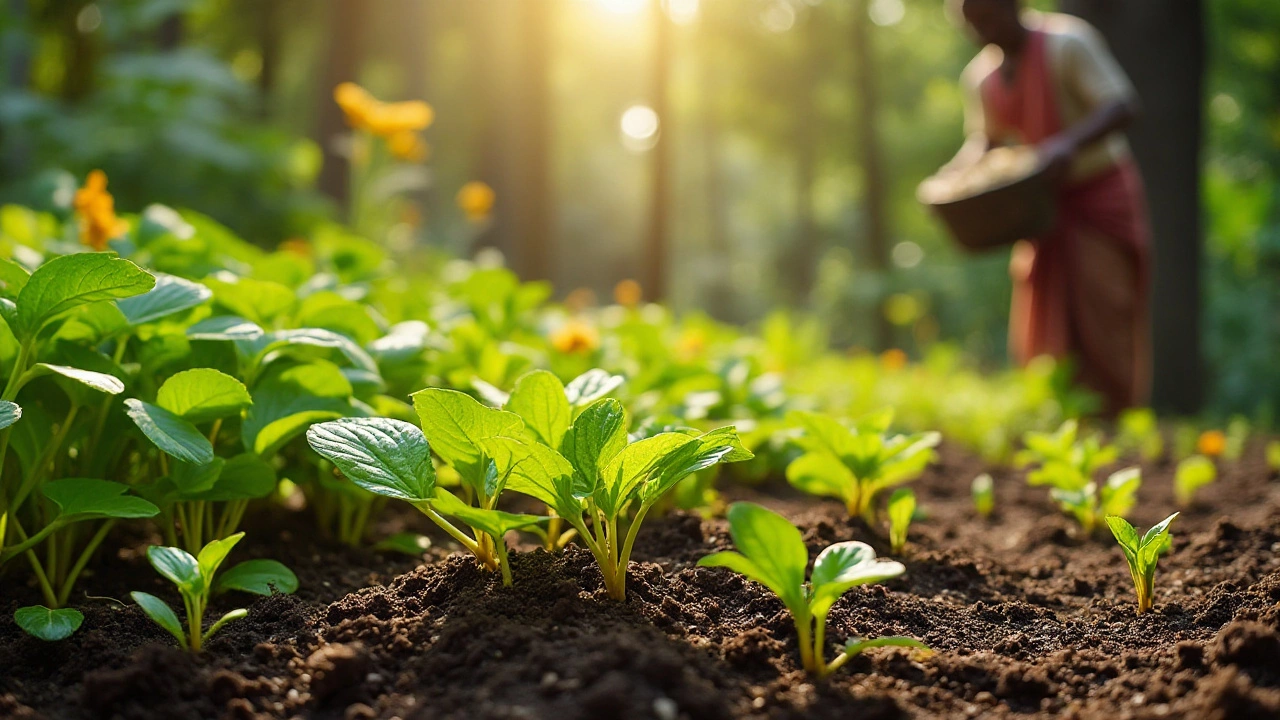Soil Improvement
When working with soil improvement, the process of enhancing soil health, fertility, and physical properties so plants can thrive. Also known as soil amendment, it involves adding materials, adjusting texture, and managing water. Another key player is organic matter, decomposed plant and animal residues that boost nutrient content and microbial activity, which directly supports stronger soil structure. Understanding these core ideas helps you choose the right tools for better yields.
Soil improvement isn’t a one‑size‑fits‑all task. It depends on the existing soil structure, the arrangement of particles, pores, and aggregates that determine drainage and aeration. Sandy soils often need added bulk, while clay soils benefit from loosening agents. By matching amendments to the specific structure, you avoid over‑watering or nutrient lock‑out. This is why many gardeners pair compost with gypsum or sand, creating a balanced environment for roots.
One proven way to deliver amendments efficiently is drip irrigation, a low‑pressure system that places water directly at the root zone. Drip lines reduce evaporation, keep the soil surface from compacting, and allow you to time nutrient‑rich water pulses. When combined with a thin layer of mulch, the system can keep moisture levels steady, encouraging microbes to break down organic matter faster.
Key Methods for Soil Improvement
First, start with a simple compost test. Scoop a handful of soil, add an equal part of mature compost, and feel the texture. If it feels crumbly and holds a bit of water without turning soggy, you’re on the right track. Next, consider no‑till gardening, a method that avoids digging and preserves soil structure. By limiting disturbance, you let earthworms and fungal networks expand, which naturally aerates the ground and improves water infiltration.
Second, address pH levels. Most vegetables thrive in a slightly acidic to neutral range (pH 6.0‑7.0). Use a cheap soil test kit and, if needed, add lime to raise pH or elemental sulfur to lower it. Adjusting pH works hand‑in‑hand with organic matter because many nutrients become more available when the soil chemistry is balanced.
Third, think about cover crops. Planting legumes like clover or beans during off‑season months adds nitrogen back into the soil. When you cut them down, the residues decompose into organic matter, closing the nutrient loop. This practice links directly to soil structure improvement, because the roots create channels that improve aeration and water movement.
Fourth, keep an eye on drainage. If water pools after rain, you may need to incorporate coarse sand or coarse organic mulch to increase pore space. Conversely, if water drains too quickly, increase the amount of fine organic material to retain moisture. Drip irrigation can be fine‑tuned to compensate for these conditions, delivering just enough water to keep plants happy.
Finally, monitor progress. After each growing season, record yields, plant vigor, and any pest issues. Over time you’ll see patterns that tell you which amendments work best for your specific soil. This feedback loop turns soil improvement from a guess‑work exercise into a data‑driven habit.
All these techniques share a common thread: they aim to boost the soil’s natural ability to support plant life. By understanding how organic matter, soil structure, drip irrigation, and no‑till practices interact, you can craft a plan that fits your garden’s unique needs. Below, you’ll find a curated selection of articles that dive deeper into each of these topics, offering step‑by‑step guides, expert tips, and real‑world case studies.
Guide to Restoring and Improving Soil in Garden Beds
Restoring soil in a garden bed to its optimal condition can usher in vibrant growth and flourishing plants. There are several strategies to help rejuvenate tired soil, from improving its nutritional content to enhancing its structure. With practical techniques such as adding organic matter, practicing crop rotation, and ensuring proper drainage, gardeners can revitalize their plots. Cultivating healthy soil involves understanding the symbiotic roles of microorganisms and plant life. This article delves into actionable steps and insights to rejuvenate your garden soil.
- manufacturing
- India
- food processing
- garden tips
- rice cultivation
- government schemes
- balcony garden
- urban gardening
- balcony gardening
- profitable business
- business ideas
- plastic manufacturing
- drip irrigation
- plant care
- steel manufacturing
- sustainable gardening
- startup ideas
- steel industry
- flower gardening
- textile manufacturers






